
Tiziano Vecellio Titian Painting Reproductions 3 of 10
c.1485-1576
Italian High Renaissance Painter
Tiziano Vecellio or Vecelli (c. 1488/90 - August 27, 1576), better known as Titian (tish'un), was the leader of the 16th-century Venetian school of the Italian Renaissance. He was born at Pieve di Cadore near Belluno (Veneto) in Italy, and died at Venice. During his lifetime he was often called Da Cadore, from the place of his birth. The color titian is derived from the artist's frequent use of brownish orange.
Recognised by his contemporaries as "the sun amidst small stars", Titian was one of the most versatile of Italian painters, equally adept with portraits and landscapes (two genres that first brought him fame), mythological and religious subjects. Had he died at the age of 40, he would still have to be regarded as one of the most influential artists of his time. But he lived on for half a century, changing his manner so drastically that some critics refuse to believe that his early and later pieces could have been produced by the same man. What unites two parts of his career is his deep interest in colour. Although his later works may not sing with vivid, luminous tints as his early pieces do, yet their loose brushwork and subtlety of polychromatic modulations have no precedents in the history of Western art.
Childhood
No one is sure of the exact date of Titian's birth, but the traditional notion that he was born in 1477 is seldom given credit nowadays. He was one of a family of four and son of Gregorio Vecelli, a distinguished councilor and soldier, and of his wife Lucia. At age 10 his brother took him to Venice and apprenticed him to celebrated mosaicist, Sebastian Zuccato. At the end of four or five years, he entered the studio of the aged painter Giovanni Bellini, at that time the most noted artist in the city. There he found a group of young men about his own age, among them Giovanni Palma da Serinalta, Lorenzo Lotto, Sebastiano Luciani, and Giorgio da Castelfranco, nicknamed Giorgione. Francesco Vecellio, his elder brother, later became a painter of some note in Venice.
Early work
A fresco of Hercules on the Morosini Palace is said to have been one of his earliest works; others were the Virgin and Child, in the Vienna Belvedere, and the Visitation of Mary and Elizabeth (from the convent of S. Andrea), now in the Venetian Academy. Titian entered into partnership with Giorgione, and it is difficult to distinguish their early works. The earliest known work of Titian, the little Ecce Homo of the Scuola di San Rocco, was long regarded as the work of Giorgione. The same confusion or uncertainty is connected with more than one of the Sacred Conversations. The two young masters were likewise recognized as the two leaders of their new school of "arte moderna", that is of painting made more flexible, freed from symmetry and the remnants of hieratic conventions still to be found in the works of Giovanni Bellini. In 1507-1508 Giorgione was commissioned by the state to execute frescoes on the re-erected Fondaco dei Tedeschi. Titian and Morto da Feltre worked along with him, and some fragments of Titian's paintings remain. Some of their work is known, in part, through the engraving of Fontana. Titian's talent in fresco is shown in those he painted in 1511 at Padua in the Carmelite church and in the Scuola del Santo, some of which have been preserved, among them the Meeting at the Golden Gate, and three scenes from the life of St. Anthony of Padua, the Murder of a Young Woman by Her Husband, A Child Testifying to Its Mother's Innocence, and The Saint Healing the Young Man with a Broken Limb. From Padua in 1512, Titian returned to Venice; and in 1513 he obtained a broker's patent in the Fondaco dei Tedeschi (state-warehouse for the German merchants), termed La Sanseria or Senseria (a privilege much coveted by rising or risen artists), and became superintendent of the government works, being especially charged to complete the paintings left unfinished by Giovanni Bellini in the hall of the great council in the ducal palace. He set up an atelier on the Grand Canal at S. Samuele, the precise site being now unknown. It was not until 1516, upon the death of Bellini, that he came into actual enjoyment of his patent. At the same time he entered an exclusive arrangement for painting. The patent yielded him a good annuity of 20 crowns and exempted him from certain taxes - he being bound in return to paint likenesses of the successive Doges of his time at the fixed price of eight crowns each. The actual number he executed was five.
Growth
Giorgione died in 1510 and the aged Bellini in 1516, leaving Titian after the production of such masterpieces without a rival in the Venetian School. For 60 years he was to be the absolute and undisputed head, the official master, and as it were, the painter laureate of the Republic Serenissime. As early as 1516 he succeeded his old master Bellini as the pensioner of the Senate. During this period (1516-1530), which may be called the period of his bloom and maturity, the artist freed himself from the traditions of his youth, undertook a class of more complex subjects and for the first time attempted the monumental style. In 1518 he produced for the high altar of the church of the Frari, a world-renowned masterpiece, the Assumption of the Virgin, still in situ. It excited a vast sensation, being an extraordinary piece of colourist execution on a great scale which Italy had not yet seen. The signoria took note of the facts and did not fail to observe that Titian was neglecting his work in the hall of the great council. The pictorial structure of the Assumption - that of uniting in the same composition two or three scenes superimposed on different levels, earth and heaven, the temporal and the infinite - was continued in a series of works such as the retable of San Domenico at Ancona (1520), the retable of Brescia (1522), and the retable of San Niccolo (1523, at the Vatican), each time attaining to a higher and more perfect conception, finally reaching an unsurpassable formula in the Pesaro retable, (1526), in the Church of the Frari at Venice. This perhaps is his most perfect and most studied work, whose patiently developed plan is set forth with supreme display of order and freedom, of originality and style. Here Titian gave a new conception of the traditional groups of donors and holy persons moving in aerial space, the plans and different degrees set in an architectural framework. Titian was now at the height of his fame; and towards 1521, following the production of a figure of St Sebastian for the papal legate in Brescia (a work of which there are numerous replicas), purchasers became extremely urgent for his productions. To this period belongs a more extraordinary work, The Beneath of St. Peter of Verona (1530), formerly in the Dominican Church of San Zanipolo, and destroyed by an Austrian shell in 1867. Only copies of this sublime picture remain - one in the Ecole des Beaux Arts). The association of the landscape with a scene of murder - a rapidly brutal scene of slaying, a cry rising above the old oak-trees, a Dominican escaping the ambush, and overall the shudder and stir of the dark branches - "...this is all, but never perhaps has tragedy more swift, startling, and pathetic been depicted even by Tintoretto or Delacroix." The artist simultaneously continued his series of small Madonnas which he treated amid beautiful landscapes in the manner of genre pictures or poetic pastorals, the Virgin with the Rabbit in the Louvre being the finished type of these pictures. Another work of the same period, also in the Louvre, is the Entombment. This was likewise the period of the mythological scenes, such as the famous Bacchanals of Madrid, and the Bacchus and Ariadne of London, "...perhaps the most brilliant productions of the neo-pagan culture or "Alexandrianism" of the Renaissance, many times imitated but never surpassed even by Rubens himself." Finally this was the period of mastery when the artist composed the half-length figures and busts of young women, such as Flora of the Uffizi, or The Young Woman at Her Toilet in the Louvre (also called, without reason, Laura de Dianti or The Mistress of Titian). In 1525, after some irregular living and a consequent fever, he married a lady named Cecilia, thereby legitimizing their first child, Pomponio, and two (or perhaps three) others followed, including Titian's supposed favorite, Orazio. Towards 1526 he became acquainted, and soon exceedingly intimate, with Pietro Aretino, the literary bravo, of influence and audacity hitherto unexampled, who figures so strangely in the chronicles of the time. Titian sent a portrait of him to Gonzaga, duke of Mantua. A great affliction befell him in August 1530 in the death of his wife. He then, with his three children, one of them the infant Lavinia, whose birth had been fatal to the mother, moved to a new home, and got his sister Orsa to come from Cadore and take charge of the household. The mansion, difficult to find now, is in the Bin Grande, then a fashionable suburb, being in the extreme end of Venice, on the sea, with beautiful gardens and a look-out towards Murano.
Maturity
During the next period (1530-1550), as was foreshadowed by his Martyrdom of St. Peter, Titian devoted himself more and more to the dramatic style. From this time come his historical scene, the most characteristic of which have mutilated or destroyed; thus, the Battle of Cadore, the artist's greatest efforts to master movement and to express even tumult, his most violent attempt to go out of himself and achieve the heroic, wherein he rivals the War of Pisa, The Battle of Anghiari, and the Battle of Constantine, perished in 1577 in the fire which destroyed all the old pictures adorning the Doge's Palace. There is extant only a poor, incomplete copy at the Uffizi, and a mediocre engraving by Fontana. In like manner the Speech of the Marquis del Vasto (Madrid, 1541) was partly destroyed by fire. But this portion of the master's work is adequately represented by the Presentation of the Blessed Virgin (Venice, 1539), one of his most popular canvasses, and by Ecce Homo (Vienna, 1541), one of the most pathetic and life-like of masterpieces. The School of Bologna and Rubens many times borrowed the distinguished and magisterial mise-en-scene, the grand and stirring effect, and these horses, soldiers, lictors, these powerful stirrings of crowds at the foot of a stairway, while over all are the light of torches and the flapping of banners against the sky, have been often repeated. Less successful were the pendentives of the cupola at Sta. Maria della Salute (Death of Abel, Sacrifice of Abraham, David and Goliath). These violent scenes viewed in perspective from below - like the famous pendentives of the Sistine Chapel - were by their very nature in unfavorable situations. They were nevertheless much admired and imitated, Rubens among others applying this system to his 40 ceilings (the sketches only remain) of the Jesuit church at Antwerp. At this time also, the time of his visit to Rome, the artist began his series of reclining Venuses (The Venus of Urbino of the Uffizi, Venus and Love at the same museum, Venus and the Organ-Player, Madrid), in which is recognized the effect or the direct reflection of the impression produced on the master by contact with ancient sculpture. Giorgione had already dealt with the subject in the Dresden picture, but here a purple drapery substituted for its background of verdure was sufficient to change, by its harmonious coloring, the whole meaning of the scene. Furthermore Titian had from the beginning of his career shown himself to be an masterful portrait-painter, in works like La Bella (Eleanora de Gonzaga, Duchess of Urbino, at the Pitti Palace). He painted the likenesses of princes, or Doges, cardinals or monks, and artists or writers. "...no other painter was so successful in extracting from each physiognomy so many traits at once characteristic and beautiful," according to the Catholic Encyclopedia. Among portrait-painters Titian is compared to Rembrandt and Velasquez, with the interior life of the former, and the clearness, certainty, and obviousness of the latter. The last-named qualities are sufficiently manifested in the Paul III of Naples, or the sketch of the same pope and his two nephews, the Aretino of the Pitti Palace, the Eleanora of Portugal (Madrid), and the series of King Charles V of the same museum, the Charles V with a Greyhound (1533), and especially the Charles V at Muhlberg (1548), an equestrian picture which as a symphony of purples is perhaps the ne plus ultra of the art of painting. In 1532 after painting a portrait of the emperor Charles V in Bologna he was made a count palatine and knight of the Golden Spur. His children were also made nobles of the empire, which for a painter was an exceptional honor. The Venetian government, dissatisfied with Titian's neglect of the work for the ducal palace, ordered him in 1538 to refund the money which he had received for time unemployed, and Pordenone, his formidable rival of recent years, was installed in his place. However, at the end of a year Pordenone died, and Titian, who meanwhile applied himself diligently to painting in the hall the battle of Cadore, was reinstated. This picture, which was burned with several others in 1577?, represented in life-size the moment at which the Venetian captain, D'Alviano fronted the enemy with horses and men crashing down into a stream. Fontanas engraving, and a sketch by Titian himself in the gallery of the Uffizi in Florence, record the energetic composition. As a matter of professional and worldly success his position from about this time is regarded as equal only to that of Raphael, Michelangelo, and at a later date Rubens. In 1540 he received a pension from D'Avalos, marquis del Vasto, and an annuity of 200 crowns (which was afterwards doubled) from Charles V on the treasury of Milan. Another source of profit, for he was always sufficiently keen after money, was a contract obtained in 1542 for supplying grain to Cadore, where he visited almost every year and where he was both generous and influential. Titian had a favorite villa on the neighboring Manza Hill, from which (it may be inferred) he made his chief observations of landscape form and effect. The so-called Titian's mill, constantly discernible in his studies, is at Collontola, near Belluno. He visited Rome in 1546, and obtained the freedom of the city ??†his immediate predecessor in that honour having been Michelangelo in 1537. He could at the same time have succeeded the painter Fra Sebastiano in his lucrative office of the piombo, and he made no scruple of becoming a friar for the purpose; but the project lapsed through his being summoned away from Venice in 1547 to paint Charles V and others in Augsburg. He was there again in 1550, and executed the portrait of Philip II which was sent to England and proved a potent auxiliary in the suit of the prince for the hand of Queen Mary.
Final years
During the last 25 years of his life (1550-1576) the artist, more and more absorbed in his work as a portrait-painter and also more self-critical, an insatiable perfectionist, finished only a few great works. Some of his pictures he kept in his studio for 10 years, never wearying of returning to them and retouching them, constantly adding new expressions at once more refined, concise, and subtle. For each of the problems which he successively undertook he furnished a new and more perfect formula. He never again equaled the emotion and tragedy of the Crowning with Thorns (Louvre), in the expression of the mysterious and the divine he never equaled the poetry of the Pilgrims of Emmaus, while in superb and heroic brilliancy he never again executed anything more grand than The Doge Grimani adoring Faith (Venice, Doge's Palace), or the Trinity, of Madrid. On the other hand from the standpoint of flesh tints, his most moving pictures are those of his old age, the Dan of Naples and of Madrid, the Antiope of the Louvre, the Rape of Europa (Boston, Gardner collection), etc. He even attempted problems of chiaroscuro in fantastic night effects (Martyrdom of St. Laurence, Church of the Jesuits, Venice; St. Jerome, Louvre). In the domain of the real he always remained equally strong, sure, and master of himself; his portraits of Philip II (Madrid), those of his daughter, Lavinia, and those of himself are numbered among his masterpieces. Vecelli had affianced his daughter Lavinia, the beautiful girl whom he loved deeply and painted various times, to Cornelio Sarcinelli of Serravalle. She had succeeded her aunt Orsa, then deceased, as the manager of the household, which, with the lordly income that Titian made by this time, placed her on a corresponding footing. The marriage took place in 1554. She died in childbirth in 1560. He was at the Council of Trent towards 1555, of which his admirable picture or finished sketch in the Louvre bears record. Titian's friend Aretino died suddenly in 1556, and another close intimate, the sculptor and architect Jacopo Sansovino, in 1570. In September 1565 Titian went to Cadore and designed the decorations for the church at Pieve, partly executed by his pupils. One of these is a Transfiguration, another an Annunciation (now in S. Salvatore, Venice), inscribed Titianus fecit, by way of protest (it is said) against the disparagement of some persons who cavilled at the veteran's failing handicraft. He continued to accept commissions to the last. He had selected as the place for his burial the chapel of the Crucifix in the church of the Fran; and, in return for a grave, he offered the Franciscans a picture of the Pieta, representing himself and his son Orazio before the Saviour, another figure in the composition being a sibyl. This work he nearly finished; but some differences arose regarding it, and he then settled to be interred in his native Pieve. Titian was approaching 90-years-old when the plague raging in Venice seized him, and he died on 27 August 1576. He was the only victim of that plague to be given a church burial and was interred in the Frari (Santa Maria Gloriosa dei Frari), as at first intended, and his Pieta was finished by Palma Giovane. He lies near his own famous painting, the Madonna di Ca' Pesaro. No memorial marked his grave, until by Austrian command Canova executed the monument. Immediately after Titian's own death, his son and pictorial assistant Orazio died of the same epidemic. His sumptuous mansion was plundered during the plague by thieves.
Family
Several other artists of the Vecelli family followed in the wake of Titian. Francesco Vecelli, his elder brother, was introduced to painting by Titian (it is said at the age of twelve, but chronology will hardly admit of this), and painted in the church of S. Vito in Cadore a picture of the titular saint armed. This was a noteworthy performance, of which Titian (the usual story) became jealous; so Francesco was diverted from painting to soldiering, and afterwards to mercantile life. Marco Vecelli, called Marco di Tiziano, Titian's nephew, born in 1545, was constantly with the master in his old age, and, learned his methods of work. He has left some able productions in the ducal palace, the Meeting of Charles V. and Clement VII. in 1529 ; in S. Giacomo di Rialto, an Annunciation ; in SS. Giovani e Paolo, Christ Fulminant. A son of Marco, named Tiziano (or Tizianello), painted early in the 17th century. From a different branch of the family came Fabrizio di Ettore, a painter who died in 1580. His brother Cesare, who also left some pictures, is well known by his book of engraved costumes, Abiti antichi e moderni. Tommaso Vecelli, also a painter, died in 1620. There was another relative, Girolamo Dante, who, being a scholar and assistant of Titian, was called Girolamo di Tiziano. Various pictures of his were touched up by the master, and are difficult to distinguish from originals. Apart from members of his family, the scholars of Titian were not numerous; Paris Bordone and Bonifazio were the two of superior excellence. El Greco (or Dominikos Theotokopoulos) was employed by the master to engrave from his works. It is said that Titian himself engraved on copper and on wood, but this may well be questioned.
Childhood
No one is sure of the exact date of Titian's birth, but the traditional notion that he was born in 1477 is seldom given credit nowadays. He was one of a family of four and son of Gregorio Vecelli, a distinguished councilor and soldier, and of his wife Lucia. At age 10 his brother took him to Venice and apprenticed him to celebrated mosaicist, Sebastian Zuccato. At the end of four or five years, he entered the studio of the aged painter Giovanni Bellini, at that time the most noted artist in the city. There he found a group of young men about his own age, among them Giovanni Palma da Serinalta, Lorenzo Lotto, Sebastiano Luciani, and Giorgio da Castelfranco, nicknamed Giorgione. Francesco Vecellio, his elder brother, later became a painter of some note in Venice.
Early work
A fresco of Hercules on the Morosini Palace is said to have been one of his earliest works; others were the Virgin and Child, in the Vienna Belvedere, and the Visitation of Mary and Elizabeth (from the convent of S. Andrea), now in the Venetian Academy. Titian entered into partnership with Giorgione, and it is difficult to distinguish their early works. The earliest known work of Titian, the little Ecce Homo of the Scuola di San Rocco, was long regarded as the work of Giorgione. The same confusion or uncertainty is connected with more than one of the Sacred Conversations. The two young masters were likewise recognized as the two leaders of their new school of "arte moderna", that is of painting made more flexible, freed from symmetry and the remnants of hieratic conventions still to be found in the works of Giovanni Bellini. In 1507-1508 Giorgione was commissioned by the state to execute frescoes on the re-erected Fondaco dei Tedeschi. Titian and Morto da Feltre worked along with him, and some fragments of Titian's paintings remain. Some of their work is known, in part, through the engraving of Fontana. Titian's talent in fresco is shown in those he painted in 1511 at Padua in the Carmelite church and in the Scuola del Santo, some of which have been preserved, among them the Meeting at the Golden Gate, and three scenes from the life of St. Anthony of Padua, the Murder of a Young Woman by Her Husband, A Child Testifying to Its Mother's Innocence, and The Saint Healing the Young Man with a Broken Limb. From Padua in 1512, Titian returned to Venice; and in 1513 he obtained a broker's patent in the Fondaco dei Tedeschi (state-warehouse for the German merchants), termed La Sanseria or Senseria (a privilege much coveted by rising or risen artists), and became superintendent of the government works, being especially charged to complete the paintings left unfinished by Giovanni Bellini in the hall of the great council in the ducal palace. He set up an atelier on the Grand Canal at S. Samuele, the precise site being now unknown. It was not until 1516, upon the death of Bellini, that he came into actual enjoyment of his patent. At the same time he entered an exclusive arrangement for painting. The patent yielded him a good annuity of 20 crowns and exempted him from certain taxes - he being bound in return to paint likenesses of the successive Doges of his time at the fixed price of eight crowns each. The actual number he executed was five.
Growth
Giorgione died in 1510 and the aged Bellini in 1516, leaving Titian after the production of such masterpieces without a rival in the Venetian School. For 60 years he was to be the absolute and undisputed head, the official master, and as it were, the painter laureate of the Republic Serenissime. As early as 1516 he succeeded his old master Bellini as the pensioner of the Senate. During this period (1516-1530), which may be called the period of his bloom and maturity, the artist freed himself from the traditions of his youth, undertook a class of more complex subjects and for the first time attempted the monumental style. In 1518 he produced for the high altar of the church of the Frari, a world-renowned masterpiece, the Assumption of the Virgin, still in situ. It excited a vast sensation, being an extraordinary piece of colourist execution on a great scale which Italy had not yet seen. The signoria took note of the facts and did not fail to observe that Titian was neglecting his work in the hall of the great council. The pictorial structure of the Assumption - that of uniting in the same composition two or three scenes superimposed on different levels, earth and heaven, the temporal and the infinite - was continued in a series of works such as the retable of San Domenico at Ancona (1520), the retable of Brescia (1522), and the retable of San Niccolo (1523, at the Vatican), each time attaining to a higher and more perfect conception, finally reaching an unsurpassable formula in the Pesaro retable, (1526), in the Church of the Frari at Venice. This perhaps is his most perfect and most studied work, whose patiently developed plan is set forth with supreme display of order and freedom, of originality and style. Here Titian gave a new conception of the traditional groups of donors and holy persons moving in aerial space, the plans and different degrees set in an architectural framework. Titian was now at the height of his fame; and towards 1521, following the production of a figure of St Sebastian for the papal legate in Brescia (a work of which there are numerous replicas), purchasers became extremely urgent for his productions. To this period belongs a more extraordinary work, The Beneath of St. Peter of Verona (1530), formerly in the Dominican Church of San Zanipolo, and destroyed by an Austrian shell in 1867. Only copies of this sublime picture remain - one in the Ecole des Beaux Arts). The association of the landscape with a scene of murder - a rapidly brutal scene of slaying, a cry rising above the old oak-trees, a Dominican escaping the ambush, and overall the shudder and stir of the dark branches - "...this is all, but never perhaps has tragedy more swift, startling, and pathetic been depicted even by Tintoretto or Delacroix." The artist simultaneously continued his series of small Madonnas which he treated amid beautiful landscapes in the manner of genre pictures or poetic pastorals, the Virgin with the Rabbit in the Louvre being the finished type of these pictures. Another work of the same period, also in the Louvre, is the Entombment. This was likewise the period of the mythological scenes, such as the famous Bacchanals of Madrid, and the Bacchus and Ariadne of London, "...perhaps the most brilliant productions of the neo-pagan culture or "Alexandrianism" of the Renaissance, many times imitated but never surpassed even by Rubens himself." Finally this was the period of mastery when the artist composed the half-length figures and busts of young women, such as Flora of the Uffizi, or The Young Woman at Her Toilet in the Louvre (also called, without reason, Laura de Dianti or The Mistress of Titian). In 1525, after some irregular living and a consequent fever, he married a lady named Cecilia, thereby legitimizing their first child, Pomponio, and two (or perhaps three) others followed, including Titian's supposed favorite, Orazio. Towards 1526 he became acquainted, and soon exceedingly intimate, with Pietro Aretino, the literary bravo, of influence and audacity hitherto unexampled, who figures so strangely in the chronicles of the time. Titian sent a portrait of him to Gonzaga, duke of Mantua. A great affliction befell him in August 1530 in the death of his wife. He then, with his three children, one of them the infant Lavinia, whose birth had been fatal to the mother, moved to a new home, and got his sister Orsa to come from Cadore and take charge of the household. The mansion, difficult to find now, is in the Bin Grande, then a fashionable suburb, being in the extreme end of Venice, on the sea, with beautiful gardens and a look-out towards Murano.
Maturity
During the next period (1530-1550), as was foreshadowed by his Martyrdom of St. Peter, Titian devoted himself more and more to the dramatic style. From this time come his historical scene, the most characteristic of which have mutilated or destroyed; thus, the Battle of Cadore, the artist's greatest efforts to master movement and to express even tumult, his most violent attempt to go out of himself and achieve the heroic, wherein he rivals the War of Pisa, The Battle of Anghiari, and the Battle of Constantine, perished in 1577 in the fire which destroyed all the old pictures adorning the Doge's Palace. There is extant only a poor, incomplete copy at the Uffizi, and a mediocre engraving by Fontana. In like manner the Speech of the Marquis del Vasto (Madrid, 1541) was partly destroyed by fire. But this portion of the master's work is adequately represented by the Presentation of the Blessed Virgin (Venice, 1539), one of his most popular canvasses, and by Ecce Homo (Vienna, 1541), one of the most pathetic and life-like of masterpieces. The School of Bologna and Rubens many times borrowed the distinguished and magisterial mise-en-scene, the grand and stirring effect, and these horses, soldiers, lictors, these powerful stirrings of crowds at the foot of a stairway, while over all are the light of torches and the flapping of banners against the sky, have been often repeated. Less successful were the pendentives of the cupola at Sta. Maria della Salute (Death of Abel, Sacrifice of Abraham, David and Goliath). These violent scenes viewed in perspective from below - like the famous pendentives of the Sistine Chapel - were by their very nature in unfavorable situations. They were nevertheless much admired and imitated, Rubens among others applying this system to his 40 ceilings (the sketches only remain) of the Jesuit church at Antwerp. At this time also, the time of his visit to Rome, the artist began his series of reclining Venuses (The Venus of Urbino of the Uffizi, Venus and Love at the same museum, Venus and the Organ-Player, Madrid), in which is recognized the effect or the direct reflection of the impression produced on the master by contact with ancient sculpture. Giorgione had already dealt with the subject in the Dresden picture, but here a purple drapery substituted for its background of verdure was sufficient to change, by its harmonious coloring, the whole meaning of the scene. Furthermore Titian had from the beginning of his career shown himself to be an masterful portrait-painter, in works like La Bella (Eleanora de Gonzaga, Duchess of Urbino, at the Pitti Palace). He painted the likenesses of princes, or Doges, cardinals or monks, and artists or writers. "...no other painter was so successful in extracting from each physiognomy so many traits at once characteristic and beautiful," according to the Catholic Encyclopedia. Among portrait-painters Titian is compared to Rembrandt and Velasquez, with the interior life of the former, and the clearness, certainty, and obviousness of the latter. The last-named qualities are sufficiently manifested in the Paul III of Naples, or the sketch of the same pope and his two nephews, the Aretino of the Pitti Palace, the Eleanora of Portugal (Madrid), and the series of King Charles V of the same museum, the Charles V with a Greyhound (1533), and especially the Charles V at Muhlberg (1548), an equestrian picture which as a symphony of purples is perhaps the ne plus ultra of the art of painting. In 1532 after painting a portrait of the emperor Charles V in Bologna he was made a count palatine and knight of the Golden Spur. His children were also made nobles of the empire, which for a painter was an exceptional honor. The Venetian government, dissatisfied with Titian's neglect of the work for the ducal palace, ordered him in 1538 to refund the money which he had received for time unemployed, and Pordenone, his formidable rival of recent years, was installed in his place. However, at the end of a year Pordenone died, and Titian, who meanwhile applied himself diligently to painting in the hall the battle of Cadore, was reinstated. This picture, which was burned with several others in 1577?, represented in life-size the moment at which the Venetian captain, D'Alviano fronted the enemy with horses and men crashing down into a stream. Fontanas engraving, and a sketch by Titian himself in the gallery of the Uffizi in Florence, record the energetic composition. As a matter of professional and worldly success his position from about this time is regarded as equal only to that of Raphael, Michelangelo, and at a later date Rubens. In 1540 he received a pension from D'Avalos, marquis del Vasto, and an annuity of 200 crowns (which was afterwards doubled) from Charles V on the treasury of Milan. Another source of profit, for he was always sufficiently keen after money, was a contract obtained in 1542 for supplying grain to Cadore, where he visited almost every year and where he was both generous and influential. Titian had a favorite villa on the neighboring Manza Hill, from which (it may be inferred) he made his chief observations of landscape form and effect. The so-called Titian's mill, constantly discernible in his studies, is at Collontola, near Belluno. He visited Rome in 1546, and obtained the freedom of the city ??†his immediate predecessor in that honour having been Michelangelo in 1537. He could at the same time have succeeded the painter Fra Sebastiano in his lucrative office of the piombo, and he made no scruple of becoming a friar for the purpose; but the project lapsed through his being summoned away from Venice in 1547 to paint Charles V and others in Augsburg. He was there again in 1550, and executed the portrait of Philip II which was sent to England and proved a potent auxiliary in the suit of the prince for the hand of Queen Mary.
Final years
During the last 25 years of his life (1550-1576) the artist, more and more absorbed in his work as a portrait-painter and also more self-critical, an insatiable perfectionist, finished only a few great works. Some of his pictures he kept in his studio for 10 years, never wearying of returning to them and retouching them, constantly adding new expressions at once more refined, concise, and subtle. For each of the problems which he successively undertook he furnished a new and more perfect formula. He never again equaled the emotion and tragedy of the Crowning with Thorns (Louvre), in the expression of the mysterious and the divine he never equaled the poetry of the Pilgrims of Emmaus, while in superb and heroic brilliancy he never again executed anything more grand than The Doge Grimani adoring Faith (Venice, Doge's Palace), or the Trinity, of Madrid. On the other hand from the standpoint of flesh tints, his most moving pictures are those of his old age, the Dan of Naples and of Madrid, the Antiope of the Louvre, the Rape of Europa (Boston, Gardner collection), etc. He even attempted problems of chiaroscuro in fantastic night effects (Martyrdom of St. Laurence, Church of the Jesuits, Venice; St. Jerome, Louvre). In the domain of the real he always remained equally strong, sure, and master of himself; his portraits of Philip II (Madrid), those of his daughter, Lavinia, and those of himself are numbered among his masterpieces. Vecelli had affianced his daughter Lavinia, the beautiful girl whom he loved deeply and painted various times, to Cornelio Sarcinelli of Serravalle. She had succeeded her aunt Orsa, then deceased, as the manager of the household, which, with the lordly income that Titian made by this time, placed her on a corresponding footing. The marriage took place in 1554. She died in childbirth in 1560. He was at the Council of Trent towards 1555, of which his admirable picture or finished sketch in the Louvre bears record. Titian's friend Aretino died suddenly in 1556, and another close intimate, the sculptor and architect Jacopo Sansovino, in 1570. In September 1565 Titian went to Cadore and designed the decorations for the church at Pieve, partly executed by his pupils. One of these is a Transfiguration, another an Annunciation (now in S. Salvatore, Venice), inscribed Titianus fecit, by way of protest (it is said) against the disparagement of some persons who cavilled at the veteran's failing handicraft. He continued to accept commissions to the last. He had selected as the place for his burial the chapel of the Crucifix in the church of the Fran; and, in return for a grave, he offered the Franciscans a picture of the Pieta, representing himself and his son Orazio before the Saviour, another figure in the composition being a sibyl. This work he nearly finished; but some differences arose regarding it, and he then settled to be interred in his native Pieve. Titian was approaching 90-years-old when the plague raging in Venice seized him, and he died on 27 August 1576. He was the only victim of that plague to be given a church burial and was interred in the Frari (Santa Maria Gloriosa dei Frari), as at first intended, and his Pieta was finished by Palma Giovane. He lies near his own famous painting, the Madonna di Ca' Pesaro. No memorial marked his grave, until by Austrian command Canova executed the monument. Immediately after Titian's own death, his son and pictorial assistant Orazio died of the same epidemic. His sumptuous mansion was plundered during the plague by thieves.
Family
Several other artists of the Vecelli family followed in the wake of Titian. Francesco Vecelli, his elder brother, was introduced to painting by Titian (it is said at the age of twelve, but chronology will hardly admit of this), and painted in the church of S. Vito in Cadore a picture of the titular saint armed. This was a noteworthy performance, of which Titian (the usual story) became jealous; so Francesco was diverted from painting to soldiering, and afterwards to mercantile life. Marco Vecelli, called Marco di Tiziano, Titian's nephew, born in 1545, was constantly with the master in his old age, and, learned his methods of work. He has left some able productions in the ducal palace, the Meeting of Charles V. and Clement VII. in 1529 ; in S. Giacomo di Rialto, an Annunciation ; in SS. Giovani e Paolo, Christ Fulminant. A son of Marco, named Tiziano (or Tizianello), painted early in the 17th century. From a different branch of the family came Fabrizio di Ettore, a painter who died in 1580. His brother Cesare, who also left some pictures, is well known by his book of engraved costumes, Abiti antichi e moderni. Tommaso Vecelli, also a painter, died in 1620. There was another relative, Girolamo Dante, who, being a scholar and assistant of Titian, was called Girolamo di Tiziano. Various pictures of his were touched up by the master, and are difficult to distinguish from originals. Apart from members of his family, the scholars of Titian were not numerous; Paris Bordone and Bonifazio were the two of superior excellence. El Greco (or Dominikos Theotokopoulos) was employed by the master to engrave from his works. It is said that Titian himself engraved on copper and on wood, but this may well be questioned.
240 Titian Paintings
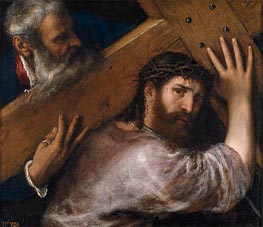
Christ and the Cyrenian 1547
Oil Painting
$1552
$1552
Canvas Print
$119.10
$119.10
SKU: TTV-9463
Tiziano Vecellio Titian
Original Size: 67 x 77 cm
Prado Museum, Madrid, Spain
Tiziano Vecellio Titian
Original Size: 67 x 77 cm
Prado Museum, Madrid, Spain
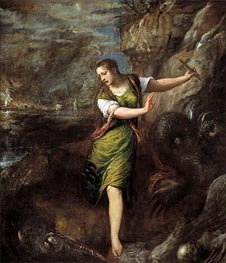
Saint Margaret c.1556
Oil Painting
$1577
$1577
Canvas Print
$118.52
$118.52
SKU: TTV-9464
Tiziano Vecellio Titian
Original Size: 209 x 183 cm
Prado Museum, Madrid, Spain
Tiziano Vecellio Titian
Original Size: 209 x 183 cm
Prado Museum, Madrid, Spain
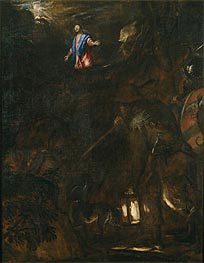
Agony in the Garden 1562
Oil Painting
$1514
$1514
Canvas Print
$106.86
$106.86
SKU: TTV-9465
Tiziano Vecellio Titian
Original Size: 176 x 136 cm
Prado Museum, Madrid, Spain
Tiziano Vecellio Titian
Original Size: 176 x 136 cm
Prado Museum, Madrid, Spain
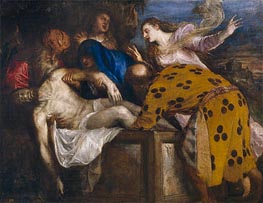
The Burial of Christ 1572
Oil Painting
$3042
$3042
Canvas Print
$106.48
$106.48
SKU: TTV-9466
Tiziano Vecellio Titian
Original Size: 130 x 168 cm
Prado Museum, Madrid, Spain
Tiziano Vecellio Titian
Original Size: 130 x 168 cm
Prado Museum, Madrid, Spain
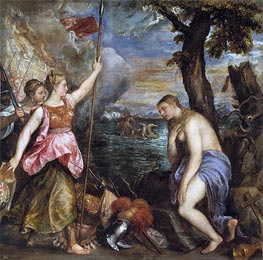
Religion Saved by Spain c.1572/75
Oil Painting
$3449
$3449
Canvas Print
$82.78
$82.78
SKU: TTV-9467
Tiziano Vecellio Titian
Original Size: 168 x 168 cm
Prado Museum, Madrid, Spain
Tiziano Vecellio Titian
Original Size: 168 x 168 cm
Prado Museum, Madrid, Spain

Following Victory at Lepanto, Felipe II offers ... c.1572/75
Oil Painting
$2922
$2922
Canvas Print
$68.03
$68.03
SKU: TTV-9468
Tiziano Vecellio Titian
Original Size: 335 x 274 cm
Prado Museum, Madrid, Spain
Tiziano Vecellio Titian
Original Size: 335 x 274 cm
Prado Museum, Madrid, Spain
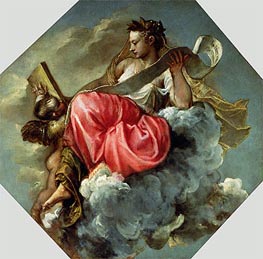
Wisdom n.d.
Oil Painting
$1421
$1421
Canvas Print
$54.62
$54.62
SKU: TTV-9469
Tiziano Vecellio Titian
Original Size: unknown
Biblioteca Marciana, Venice, Italy
Tiziano Vecellio Titian
Original Size: unknown
Biblioteca Marciana, Venice, Italy
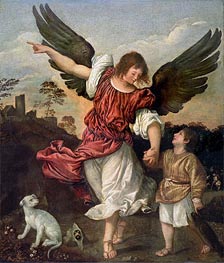
Raphael and Tobias c.1507/08
Oil Painting
$1896
$1896
Canvas Print
$69.69
$69.69
SKU: TTV-9470
Tiziano Vecellio Titian
Original Size: 170 x 146 cm
Gallerie dell'Accademia, Venice, Italy
Tiziano Vecellio Titian
Original Size: 170 x 146 cm
Gallerie dell'Accademia, Venice, Italy
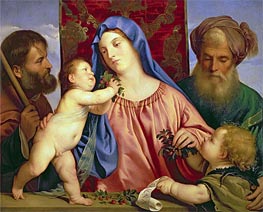
Madonna of the Cherries with Joseph, St. ... c.1516/18
Oil Painting
$3297
$3297
Canvas Print
$68.19
$68.19
SKU: TTV-9471
Tiziano Vecellio Titian
Original Size: 81 x 99.5 cm
Kunsthistorisches Museum, Vienna, Austria
Tiziano Vecellio Titian
Original Size: 81 x 99.5 cm
Kunsthistorisches Museum, Vienna, Austria
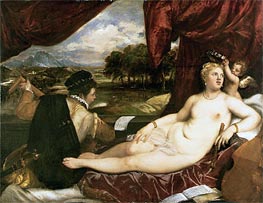
Venus and Cupid with a Lute Player c.1555/65
Oil Painting
$1928
$1928
Canvas Print
$62.16
$62.16
SKU: TTV-9472
Tiziano Vecellio Titian
Original Size: 150.5 x 196 cm
Fitzwilliam Museum, Cambridge, UK
Tiziano Vecellio Titian
Original Size: 150.5 x 196 cm
Fitzwilliam Museum, Cambridge, UK

Portrait of Francesco Maria Della Rovere, Duke of ... n.d.
Oil Painting
$1981
$1981
Canvas Print
$72.09
$72.09
SKU: TTV-9473
Tiziano Vecellio Titian
Original Size: 143 x 100 cm
Galleria degli Uffizi, Florence, Italy
Tiziano Vecellio Titian
Original Size: 143 x 100 cm
Galleria degli Uffizi, Florence, Italy
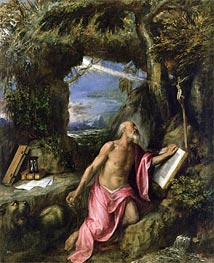
St. Jerome n.d.
Oil Painting
$1678
$1678
SKU: TTV-9474
Tiziano Vecellio Titian
Original Size: 216 x 175 cm
Real Monasterio de San Lorenzo de El Escorial, Madrid, Spain
Tiziano Vecellio Titian
Original Size: 216 x 175 cm
Real Monasterio de San Lorenzo de El Escorial, Madrid, Spain

The Man with a Glove c.1520
Oil Painting
$1757
$1757
Canvas Print
$122.79
$122.79
SKU: TTV-9475
Tiziano Vecellio Titian
Original Size: 100 x 89 cm
Louvre Museum, Paris, France
Tiziano Vecellio Titian
Original Size: 100 x 89 cm
Louvre Museum, Paris, France
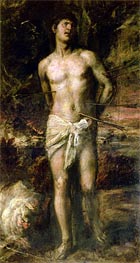
Saint Sebastian c.1570
Oil Painting
$1788
$1788
Canvas Print
$54.62
$54.62
SKU: TTV-9476
Tiziano Vecellio Titian
Original Size: 210 x 115.5 cm
The State Hermitage Museum, St. Petersburg, Russia
Tiziano Vecellio Titian
Original Size: 210 x 115.5 cm
The State Hermitage Museum, St. Petersburg, Russia
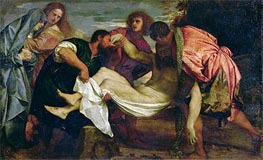
The Entombment of Christ c.1520
Oil Painting
$3350
$3350
Canvas Print
$54.62
$54.62
SKU: TTV-9477
Tiziano Vecellio Titian
Original Size: 148 x 212 cm
Louvre Museum, Paris, France
Tiziano Vecellio Titian
Original Size: 148 x 212 cm
Louvre Museum, Paris, France
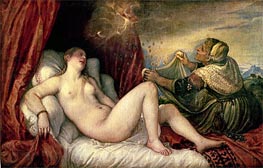
Danae c.1554
Oil Painting
$1715
$1715
Canvas Print
$54.62
$54.62
SKU: TTV-9478
Tiziano Vecellio Titian
Original Size: 120 x 187 cm
The State Hermitage Museum, St. Petersburg, Russia
Tiziano Vecellio Titian
Original Size: 120 x 187 cm
The State Hermitage Museum, St. Petersburg, Russia
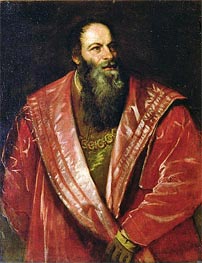
Portrait of Pietro Aretino (The Aretin) 1545
Oil Painting
$1577
$1577
Canvas Print
$55.13
$55.13
SKU: TTV-9479
Tiziano Vecellio Titian
Original Size: 96.7 x 77.6 cm
Palazzo Pitti, Florence, Italy
Tiziano Vecellio Titian
Original Size: 96.7 x 77.6 cm
Palazzo Pitti, Florence, Italy
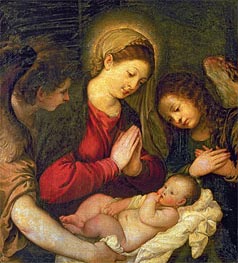
Madonna and Child with Two Angels n.d.
Oil Painting
$2171
$2171
SKU: TTV-9480
Tiziano Vecellio Titian
Original Size: unknown
Palazzo Pitti, Florence, Italy
Tiziano Vecellio Titian
Original Size: unknown
Palazzo Pitti, Florence, Italy
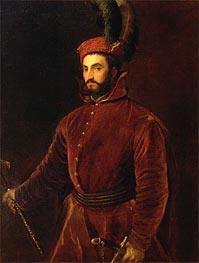
Portrait of Ippolito de' Medici 1533
Oil Painting
$1608
$1608
Canvas Print
$54.62
$54.62
SKU: TTV-9481
Tiziano Vecellio Titian
Original Size: 139 x 107 cm
Palazzo Pitti, Florence, Italy
Tiziano Vecellio Titian
Original Size: 139 x 107 cm
Palazzo Pitti, Florence, Italy
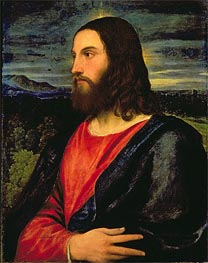
Christ the Redeemer c.1532/34
Oil Painting
$1536
$1536
Canvas Print
$64.72
$64.72
SKU: TTV-9482
Tiziano Vecellio Titian
Original Size: 77 x 57 cm
Palazzo Pitti, Florence, Italy
Tiziano Vecellio Titian
Original Size: 77 x 57 cm
Palazzo Pitti, Florence, Italy
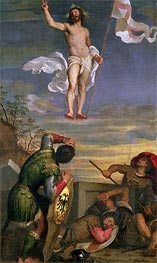
The Resurrection of Christ n.d.
Oil Painting
$2173
$2173
SKU: TTV-9483
Tiziano Vecellio Titian
Original Size: unknown
Palazzo Ducale, Venice, Italy
Tiziano Vecellio Titian
Original Size: unknown
Palazzo Ducale, Venice, Italy

Portrait of Gerolamo Melchiorre and his Brother ... c.1544
Oil Painting
$2127
$2127
Canvas Print
$59.59
$59.59
SKU: TTV-9484
Tiziano Vecellio Titian
Original Size: 91.5 x 77 cm
Private Collection
Tiziano Vecellio Titian
Original Size: 91.5 x 77 cm
Private Collection

Portrait of Francesco Savorgnan della Torre, a ... c.1560
Oil Painting
$1633
$1633
Canvas Print
$64.72
$64.72
SKU: TTV-9485
Tiziano Vecellio Titian
Original Size: 123.2 x 96.5 cm
Private Collection
Tiziano Vecellio Titian
Original Size: 123.2 x 96.5 cm
Private Collection

Portrait of Cristoforo Madruzzo, Cardinal and ... 1552
Oil Painting
$1740
$1740
Canvas Print
$54.62
$54.62
SKU: TTV-9486
Tiziano Vecellio Titian
Original Size: 210 x 109 cm
Museu de Arte, Sao Paulo, Brazil
Tiziano Vecellio Titian
Original Size: 210 x 109 cm
Museu de Arte, Sao Paulo, Brazil